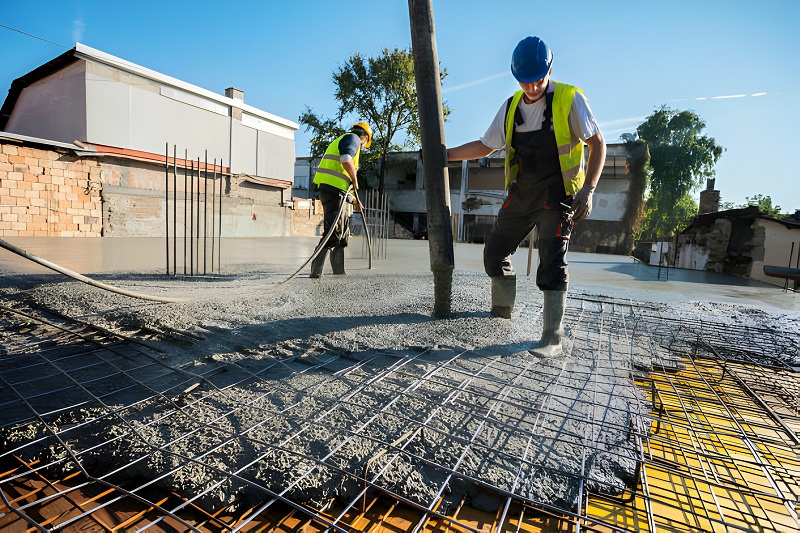Unearthing the finesse of masonry work, have you ever looked at a concrete slab and wondered how it was installed? Or perhaps, have you pondered over the upkeep of such seemingly indifferent pieces of architecture that, yet form integral parts of our everyday living? The answer lies in understanding the process of installation and the art of maintenance, both of which are nothing short of design marvels in their own right. In this blog post, we’ll explore the intriguing and complex world of concrete slabs, their installation, and maintenance. So, let’s embark on this intriguing journey of discovery.
Concrete, the unsung hero of modern structures, forms the foundation of most buildings, patios, driveways, and countless other structural components. The installation of a simple concrete slab might seem like a daunting task, but with a bit of knowledge and some elbow grease, it can be done proficiently. Maintaining it, however, is a different story that demands attention to detail, periodic checks, and necessary treatment. But fret not, we got you all covered in this comprehensive guide – showing you what to do, when and why it’s crucial, and who to call if you’re in need.
When done right, both the installation and maintenance of concrete slabs can add long years to your structure, enhance its aesthetic appeal, and increase its value. But, just like any aspect of home improvement or architectural project, this too requires research, planning, and execution. Let’s dig deeper to find out more.
Table of Contents
Why are Concrete Slabs Important?
Concrete Slabs are crucial to modern architecture, providing a strong and resilient base for structures. They are essentially flat pieces of concrete that form a substantial part of a building’s foundation, bearing the load and distributing it evenly across the ground. Their importance lies in their indeed simple but incredibly functional design.
Not just important for providing structural integrity, concrete slabs also serve several practical purposes. They provide robust, easy-to-clean, and low maintenance surfaces for outdoor spaces such as driveways and patios. Furthermore, they work as a fantastic heat sink in radiant floor heating systems, proving instrumental in energy conservation.
Moreover, concrete slabs are known for their cost-effectiveness and durability, proving essential in the creation of commercial and residential spaces. Skipping or poorly doing this step can lead to future problems, including structural damage or expensive repairs. Hence, the importance of installing and maintaining concrete slabs cannot be overstated.
What is the Process of Installing Concrete Slabs?
The process of installing concrete slabs is meticulous and involves several stages to ensure correct implementation. The first stage is site preparation, followed by forming the slab, pouring concrete, and then finishing it.
Detailed planning and understanding of the site are critical for successful installation. The ground should be leveled and cleared from organic material and rocks that could interfere with the concrete’s job to distribute weight uniformly.
Forms must then be built to shape the slabs accurately, followed by fortification using rebar or welded wire. Once ready, the concrete mixture is poured into the forms, spread, and leveled.
After the pour, the final stage of installation is the finish. This stage is crucial to the aesthetic appeal as well as the durability of the slab; it must be smoothed, cured, and sealed properly.
How to Maintain Concrete Slabs?
Good maintenance starts right from the installation process, and diligent upkeep extends the life of the slab and keeps it in excellent condition. It involves regular cleaning, sealing, and repairing when required.
Cleaning involves removing stains like oil, paint, rust, and tire marks—using power washers or specialized concrete cleaning products. Besides, sealing the slab every few years is crucial for protecting it against water, ice, salt, and oil.
Also, recognizing and treating signs of damage such as cracking and spalling promptly can prevent serious structural issues. Calling the professionals helps ensure that repairs are done correctly and promptly.
Pros and Cons of Concrete Slabs
Like any architectural element, concrete slabs have their benefits and drawbacks. They are economical, durable, and low maintenance, making them an excellent choice for many construction projects. They also offer thermal benefits in the form of radiant heating and can be designed in various ways to add aesthetic appeal.
But on the downside, concrete slabs can be quite complex to install, requiring a lot of detailed prep work and patience. They can be prone to cracking if not constructed correctly or under extreme weather conditions. Also, they can be cold underfoot in colder climates, necessitating additional insulation.
Who to Call when you Need Help?
Whilst DIY projects might seem appealing to save costs, concrete slab installation and maintenance should be left to professionals due to their technical nature. Certified and experienced contractors specializing in concrete work will be able to conduct a site assessment, provide an accurate quote, execute the installation correctly, or perform necessary repairs.
Conclusion:
In conclusion, installing and maintaining concrete slabs is a critical aspect of any construction project, be it home improvement or architectural design. It’s a marriage of intricate science and artistry – one that builds the foundation for a safe, aesthetic, and durable structure.
Sometimes, we tend to overlook such ‘behind-the-scenes’ elements in our living spaces. However, understanding what goes into forming these robust slabs and keeping them in prime condition is nothing short of fascinating.
A project as critical as this demands adequate planning, research, and the involvement of professionals. It’s truly an investment – not just monetary, but in terms of safety, stability, and eventual peace of mind we derive from our spaces.
So, the next time you’re marvelling at a beautifully laid driveway or walking across a solid foundation, take a moment to remember the elegance of concrete slabs, the unsung heroes that make our structural dreams a tangible reality.

